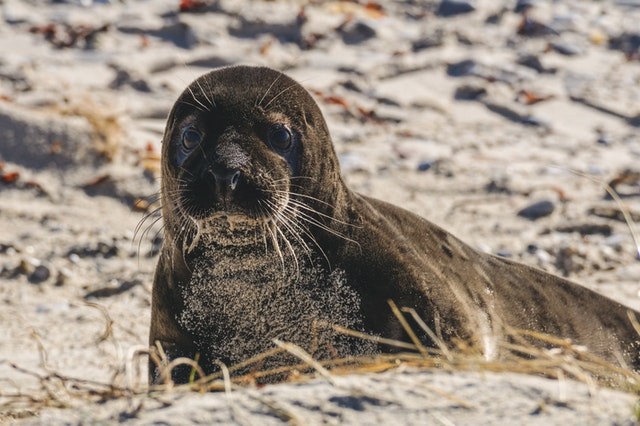In northern Cyprus, the rarest seals in the world have been caught on camera in secret breeding caves. The new breeding sites give hope for endangered species, but the sites are now in need of protection.

Monachus Monachus
According to the International Union for Conservation of Nature Red List of Endangered Species, Mediterranean monk seals, also known as Monachus monachus which are the most exposed of all the species of pinniped, a group of species that includes sea lions, walruses, sea otters, and seals - with only 700 individuals remaining in the wild. A huge amount of those seals animate in and around Cyprus.
As a result of human pressures, like tourism and bycatch, the monk seals have been forced to nurse their pups inside cave systems, instead of raising their pups on the island, in their normal open beaches.
Recent research making use of camera traps, brought out by scientists from the University of Exeter in the United Kingdom, along with the Society for the Protection of Turtles (SPOT) in Cyprus, has disclosed many previously breeding caves in the northern part of Cyprus that are unknown, the first of its kind to be discovered along the north coast of the island.
Read More : Seal Caught Killing, Eating Shark on Camera
Monk Seals Captured For Variety of Reasons
For many years, monk seals have been captured by fishermen across the Mediterranean for a variety of reasons: their fishing gear was spoiled by the seals; they compete with the seals for the same animals of prey and the skin of the seal can be traded on the black market for the health benefits that are not supported.
Recently, fishermen have killed the seals for their own use as performers in the aquarium trade; whereas, as reported by the Seal Conservation Society in the United Kingdom, the pinnipeds have lost their territory to the tourism industry.
According to History, monk seals would have made use of beaches as their dwelling place and nurse their pups like every other seal species. But, because of hunting history and a lack of untroubled beaches, they have been compelled to start making use of alternative places.

Caves Vital for Seals' Survival
A marine biologist at SPOT, lead author Damla Beton said "The seals need caves to survive in and nurse their pups at a place where there is no human."
Even though the caves ensure the safety of the monk seals and their pups, only a few caves supervised are appropriate for pups, according to the scientists.
A survey conducted in 2007 discovered 39 breeding caves along the Cyprus south coast (though most of them have since been destroyed), according to the scientists. However, for the fact that humans are usually seen in the north of the island, there was no proof to justify that the seals were living there.
The study went on until 2019 and showed that, out of the eight caves that are being supervised, the seals were breeding in three. The finding of new monk seal sites of breeding is good news to conservationists, and it is important to protect these breeding sites for the future.
Related Article : WATCH: Smart Seal Hops on Tourist Boat to Escape Hungry Orcas
For more news, updates about seals and similar topics don't forget to follow Nature World News!
© 2025 NatureWorldNews.com All rights reserved. Do not reproduce without permission.





